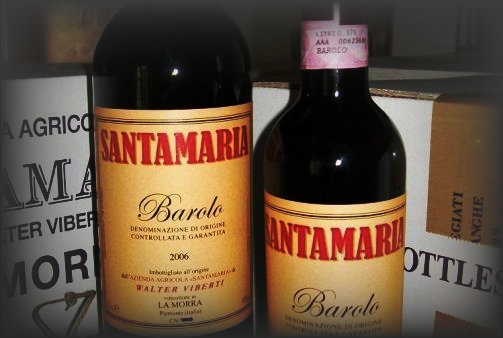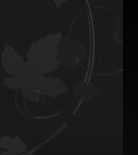|
Le Langhe sono le più elevate in quota di quel diversificato sistema di colline che occupa per 1300 km2 il quarto sud ovest del Piemonte. Il corso del fiume Tanaro a ponente, l’appennino ligure a sud, il fiume Bormida a levante e le colline tra Santo Stefano Belbo e Castagnole Lanze ne segnano i confini.
Intorno a 30 milioni di anni fa, nell’Oligocene superiore, le Alpi erano già affiorate dal mare Tetide per la pressione della zolla africana e delimitavano con rilievi di poche centinaia di metri un vasto golfo. Una costa ammantata di vegetazione tropicale, un mare caldo di poche decine di metri ricco di crostacei e coralli: ecco come era allora questa zona. In seguito a causa di movimenti tettonici il mare si approfondì raggiungendo i 6-800 metri e cominciò una lenta ma continua sedimentazione di fango e sabbia che sarebbe durata 20 milioni di anni. La sabbia, sottoposta a forti pressioni, ha dato origine ai banchi di pietra arenaria con la quale gli abitanti delle Langhe hanno poi costruito case, muretti a secco, terrazzamenti, catture d’acqua di affioramento (“crotin”). A seconda della distanza dalla costa e dalla profondità del mare variavano il tipo e la velocità dei sedimenti, e variano in conseguenza oggi la composizione dei suoli: depositi argillosi omogenei, oppure arenacei piuttosto che livelli di argilla che si alterna ritmicamente con strati di arenaria. La parte centrale delle Langhe è costituita dai sedimenti del Miocene che emersero dal mare Tetide, dopo una gestazione durata 20 milioni di anni, con un sollevamento lento ma continuo che ha portato alle quote attuali e a restituire reperti fossili (come denti di squalo) sulle cime più alte delle colline.
La diversità, sotto molti punti di vista, dei versanti di una stessa collina può portare a comprendere la natura delle Langhe. La parte nord ovest ha solitamente pendii più morbidi con pendenze minori e inclinazione sullo stesso senso degli strati geologici; è più fresca, sono frequenti gli affioramenti d’acqua quando uno strato impermeabile incontra la superficie (anche ad esempio a quote elevate, come nella parte alta di una collina). Il versante sud-est è più ripido, secco, esposto al vento, soggetto a soffrire periodi siccitosi.
Questa fondamentale diversità di ambienti in uno spazio ridotto, e di variazione di quota (dai 200 agli 800 metri) in pochi chilometri, ci spiegano la grande ricchezza di flora delle Langhe, e la coesistenza di specie mediterranee, termofile, aridoresistenti con altre alpine, continentali o tipiche delle zone umide.
La flora delle Langhe è costituita da 1500 specie, un numero elevato che rappresenta la metà del patrimonio piemontese e il 26% di quello di tutta l’Italia. Le orchidacee si sono trovate talmente bene nel terreno calcareo di Langa che le specie presenti sono 44, addirittura il 50% dell’orchidoflora nazionale.
Da Dogliani ad Alba si estende la fascia della bassa Langa, zona vocata alle viti che ne ammantano i versanti e danno i vini famosi in tutto il mondo. Salendo in quota cessano i vigneti e cominciano i prati e i pascoli, i noccioleti, i castagneti, i boschi più o meno estesi e le macchie lungo i torrenti che drenano l’acqua dalle colline creando piccoli fiumi quali il Belbo, la Bormida, l’Uzzone, la Talloria. Ricordiamo qui i boschi a Roverella, l’Orniello, il Carpino Nero, il Pino Silvestre (autentico “fossile vivente” della vegetazione dell’ultimo periodo glaciale), il Castagno, il Cerro, in limitate zone il Faggio, la Farnia, la Rovere. Ma se vogliamo prendere un vegetale a simbolo delle Langhe allora quello sarà un fiore, la catananche celeste, per la sua bellezza e la sua diffusione, come l’animale simbolo sarà la poiana.
Una natura varia e polimorfa da scoprire in tutta quanta la sua ricchezza: dalla Riserva Naturale delle sorgenti del Belbo (raro esempio di zona umido-paludosa di alta collina), ai castelli sui cui bastioni crescono il cappero o il finocchio marino, alle colline che solcate dai filari di Nebbiolo creano un panorama di unica bellezza, ai terrazzamenti fatti con pietre a secco… -la Langa non può non conquistare gli appassionati di bellezze naturali e paesaggistiche. Grande e complessa natura sintetizzata in un calice di vino che questa Terra produce: quale miglior accompagnatore per scoprirla?
Per approfondimenti vi rimandiamo all’opera dei professori Oreste e Roberto Cavallo.
The Langhe are the high hills that occupy 1300 km2 in the south west quarter of Piedmont. Their boundaries are marked by the river Tanaro to the west, the Ligurian Apennines in the south, the river Bormida to the east and the hills of Santo Stefano Belbo and Castagnole Lanze to the north.
Around 30 million years ago, in the upper Oligocene, the Alps had already emerged from the Tethys Sea due to the pressure of the African plate and had bordered, with relief of a few hundred meters, a vast gulf where the rivers discharging sediments that were slowly settle to the bottom. A coast covered with tropical vegetation, a warm sea of a few tens of meters full of shellfish and corals here as was then, this area. As a result due to tectonic movements of the sea deepened, reaching 600-800 meters and began a slow but continuous sedimentation of sand and mud. The sand, under strong pressure, gave rise to the beds of sandstone with which the inhabitants of the Langhe have also built houses, stone walls, terraces, catch outcrops of water (called "crotin" in dialect). Depending on the distance from the coast and the depth of the sea varied the type and rate of sediments, and vary as a result today the composition of soils: clay deposits homogeneous sandstone or clay rather than levels of rhythmically alternating with layers of sandstone. The central part of the Langhe region consists of the Miocene sediments emerged from the sea, after a gestation period 20 million years, with a slow but steady lifting that led to the current heghts and to return the fossil record (such as shark teeth) on the tops highest of the hills.
The diversity in many respects, the slope of a hill itself can lead to understanding the nature of the Langhe. The north west has usually softer slopes with gradients less the same direction and inclination of geological strata, is fresher, the outcrops are common when an impermeable layer of ground meets the surface (for example, even at high altitudes, as in the top of a hill). The south-eastern slope is steeper, dry, windy, subject to suffer from drought.
This fundamental diversity of environments in a limited space, and of changes in altitude (from 200 to 800 meters) in just a few kilometers, we explain the great richness of flora of the Langhe and the coexistence of Mediterranean species, thermophilic, aridoresistenti with other alpine Continental or typical of wetlands.
The flora of the Langhe consists of 1500 species, a large number that represents half of the Piedmontese heritage and 26% of that of all Italy. The orchidaceae found themselves so well in the calcareous soil of Langa that the species present are 44: the 50% of the italian orchidoflora.
From Dogliani to Alba extends the low end of the Langa area dedicated to the screws that underlie the sides and give the wines famous all over the world. Climbing at high altitude vineyards cease and begin the meadows and pastures, hazelnut, chestnut, more or less extensive woods and thickets along streams that drain the water from the hills by creating small rivers like Belbo, Bormida, Uzzone and Talloria. Here we recall the woods in oak, the ash, the hornbeam, scots pine (true "living fossil" of the vegetation of the last glacial period), chestnut, in limited areas beech and oak. But if we take a plant as a symbol of the Langhe then what will be a flower, the blue catanache, for its beauty and its spread, as the animal symbol is the buzzard.
A varied and polymorphous nature to be discovered in the whole of his richness: the natural reserve of the sources of Belbo (a rare example of wetland-marsh of high hill), on which the castles ramparts grow capers or sea fennel, the hills crossed by rows of Nebbiolo, the terraces made with dry stone... Great and complex nature synthesized in a glass of wine of this earth: it's the best companion to discover it.
For further details we refer to the work of professors Oreste and Roberto Cavallo.













